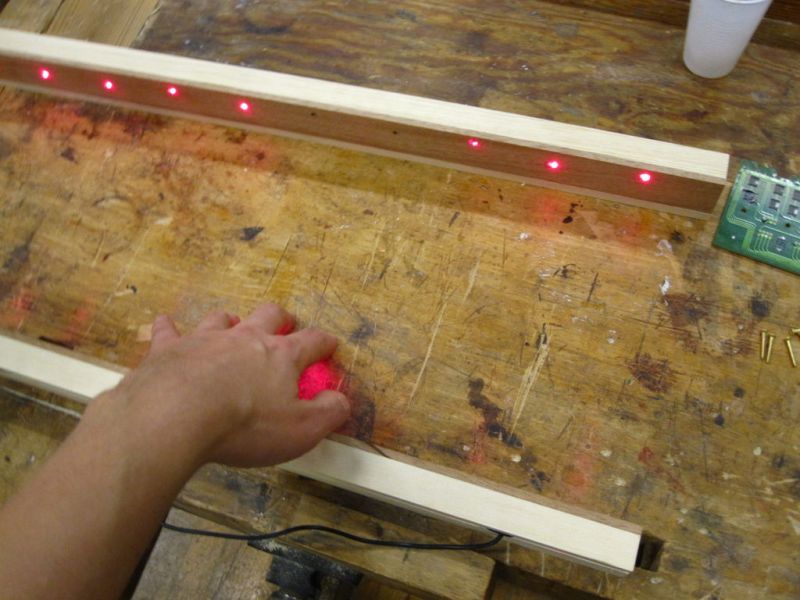MIDI instruments are cool, but they’re not laser cool. That is, unless you’ve added lasers to your MIDI instrument like [Lasse].
[Lasse] started out with an old MIDI keyboard. The plan was to recycle an older keyboard rather than have to purchase something new. In this case, the team used an ESi Keycontrol 49. They keyboard was torn apart to get to the creamy center circuit boards. [Lasse] says that most MIDI keyboards come withe a MIDI controller board and the actual key control board.
Once the key controller board was identified, [Lasse] needed to figure out how to actually trigger the keys without the physical keyboard in place. He did this by shorting out different pads while the keyboard was hooked up to the computer. If he hit the correct pads, a note would play. Simple, but effective.
The housing for the project is made out of wood. Holes were drilled in one piece to mount 12 laser diodes. That number is not arbitrary. Those familiar with music theory will know that there are 12 notes in an octave. The lasers were powered via the 5V source from USB. The lasers were then aimed at another piece of wood.
Holes were drilled in this second piece wherever the lasers hit. Simple photo resistors were mounted here. The only other components needed for each laser sensor were a resistor and a transistor. This simple discreet circuit is enough to simulate a key press when the laser beam is broken. No programming or microcontrollers required. Check out the demonstration video below to see how it works.















Where did he hide the sharks?
Notes trigger milliseconds before you touch down. Harkens back to the medieval keys illustrated by Dom Bedos.
Do what Purdue did, make a haptic glove to play it.
Hmm Jean-Michel Jarre returns!
No EDIT!
Well its a smaller cheaper (Is it more reliable?) version of his!
Of course there is No Edit! We learn from others missteakz. B^)
well they are real laser harp : the midi pitch is modify based on where the hand touch the laser . I saw one who does that with a wii remote IR sensor and it detected the position of the hand that touch the laser ( because the player use a white glove as Jmichel Jarre did) and so it detects the exact position of the bright area.
Cool project. I have a thought that’s a little off point. I want to use ableton or any VST capable audio engineering software to create audio encryption so I can use encrypted audio in the radio spectrum. Mathematically the sounds produced by VST are very nonlinear (exploid rapidly) and could make for good encryption. So [data][VST]radio[inverse_VST][data]
What do you think?
OK, how is this HaD worthy? There are framed laser harps all around (5 second googleing gave me https://www.youtube.com/watch?v=SLf3RHcn0Lw ) .
My student (I work at a Polytechnic in Europe) made one with Arduino (sans the MIDI, but took audio samples out of SD card) last year for his B.Sc. thesis. (video at https://www.youtube.com/watch?v=ZaGpioPZVk8 ).
OK, my next project will use freaking lasers, so I could make it to HaD!
Yeah, I’ve seen a lot of similar stuff too. What do you think about what I said above about using vst’s to encrypt data over radio?
Ive seen a rather similar project before, though it had a less nice housing and i think less keys. See link below.
As i also stated there, you might want to go for NLCs instead of photo resistors, since a photo resistor has a decay of 30-40ms and a NLC has a rise of 5ms. There may be some disadvantage to it as well; i dont know for sure.
http://hackaday.com/2014/07/02/laser-piano-worthy-of-the-band-wyld-stallyns/
Anyway im a bit disappointed in this project in the sense that such projects already exist in the HaD database and the project is incredibly simple without any actual hacks or tricks.